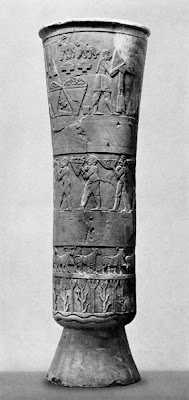What is art?
“What is..?” is the “quintessential” philosophical question. A question that in its form, promises to deliver to us the “essence” of things, the unmistakable and definite “identity” of a thing. A “thing”, that is, philosophically speaking: every possible thing, everything that there “is”, meaning: everything we can inquire about, everything we can name or speak of, even if only in the primitive form of an original question: “What is…?”
“What is art?” To start with, we can change the tense of the sentence. And this simple procedure can help us frame the question. The problem of art is also the problem of the “question of art”, of its structure, purpose and functions. To change the question: “What was art?” can help us understand the essentially historical nature of our object. Things and processes, activities and products we name “art” today, were not named as such in the past, that is, not experienced, made, used, etc. as such: as “art”, but as something other. Therefore we can say that these same things, experiences, etc have undergone a kind of historical “mutation” and became something else, something they were not before, or not seen as, before.
We can also change the verbal tense in the other direction: “What will be art?”, or “What will art become?”. Between the past and the future, we are given the intuition of the essentially mobile, mutant, dynamic character of that “thing” called art, the object of our question. Accordingly, the present is “reduced” to a place of passage between the past and the future. The present (as in “present tense” form of our question” “What is…?”) understanding of art is the provisory or the provisional framing of a concept and a practice transitional, mobile, mutant in nature. What art is nowadays has certainly relations with its former self, and with its future forms, its “becoming”. What kind of relations? Here lays the problem to be investigated. It points out, in crucial ways, to the limits of our own understanding.
Therefore, we do not start with a general, abstract definition that would encompass past, present and, yes, future; but we examine the historical construction of our subject from the empirical materials, objects and ideologies, that dialectically confront each other at different times and places.
The history of art is therefore the history of the very tensions generated and sublimated in the construction of “art”. It pertains not simply to abstract “concepts”, but also, concretely, to forms of activity, forms of production and of communication. In short: to ways of life, and their concomitant forms of self understanding and (self) misunderstanding.
“What is art?” To start with, we can change the tense of the sentence. And this simple procedure can help us frame the question. The problem of art is also the problem of the “question of art”, of its structure, purpose and functions. To change the question: “What was art?” can help us understand the essentially historical nature of our object. Things and processes, activities and products we name “art” today, were not named as such in the past, that is, not experienced, made, used, etc. as such: as “art”, but as something other. Therefore we can say that these same things, experiences, etc have undergone a kind of historical “mutation” and became something else, something they were not before, or not seen as, before.
We can also change the verbal tense in the other direction: “What will be art?”, or “What will art become?”. Between the past and the future, we are given the intuition of the essentially mobile, mutant, dynamic character of that “thing” called art, the object of our question. Accordingly, the present is “reduced” to a place of passage between the past and the future. The present (as in “present tense” form of our question” “What is…?”) understanding of art is the provisory or the provisional framing of a concept and a practice transitional, mobile, mutant in nature. What art is nowadays has certainly relations with its former self, and with its future forms, its “becoming”. What kind of relations? Here lays the problem to be investigated. It points out, in crucial ways, to the limits of our own understanding.
Therefore, we do not start with a general, abstract definition that would encompass past, present and, yes, future; but we examine the historical construction of our subject from the empirical materials, objects and ideologies, that dialectically confront each other at different times and places.
The history of art is therefore the history of the very tensions generated and sublimated in the construction of “art”. It pertains not simply to abstract “concepts”, but also, concretely, to forms of activity, forms of production and of communication. In short: to ways of life, and their concomitant forms of self understanding and (self) misunderstanding.
Marcelo Guimaraes Lima


Comments